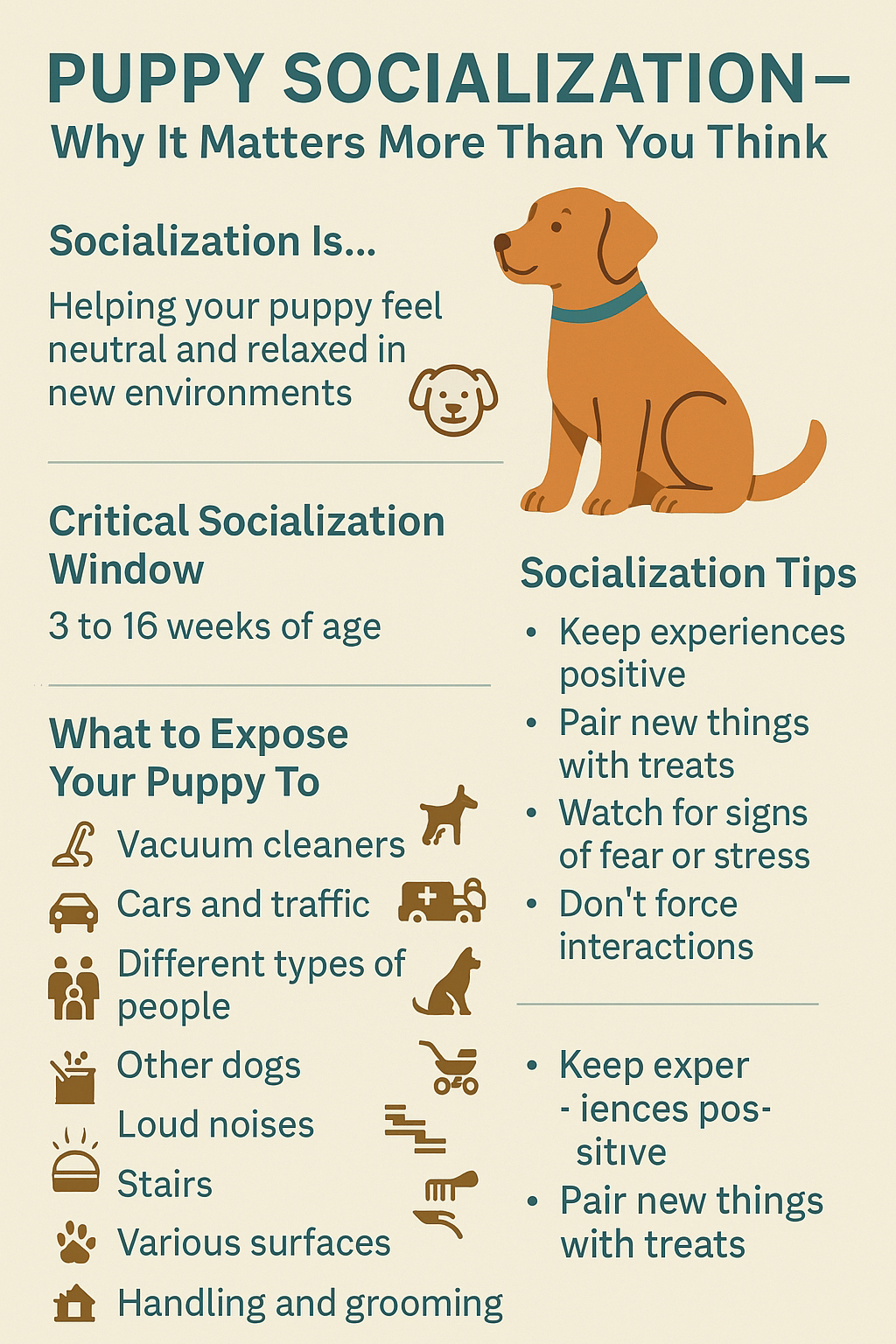When you hear the word “socialization,” it’s easy to picture a happy puppy bounding up to every person and dog it sees, tail wagging, eager to make new friends. But here’s the truth: socialization isn’t about your dog loving everyone—it’s about your dog being okay with everything.
Proper socialization sets the foundation for a calm, confident, and well-adjusted adult dog. And it starts earlier than many people realize.
🐶 What Is Puppy Socialization?
Puppy socialization is the process of introducing your puppy to a wide range of sights, sounds, smells, surfaces, people, and animals in a safe and positive way. The goal is not to make them outgoing or overly friendly, but rather to help them feel neutral and relaxed in new environments.
Your dog doesn’t need to love strangers or other dogs—they just need to handle their presence without stress, fear, or reactivity.
🧠 The Critical Socialization Window
The ideal window for socialization is between 3 and 16 weeks of age, though work can (and should!) continue afterward. During this early period, puppies are more receptive to new experiences. A good breeder or foster home will begin this process before the puppy ever comes home with you.
The longer you wait, the harder it becomes to build positive associations. That’s why socialization should be a top priority—not an afterthought.
🌍 What Should You Socialize Your Puppy To?
Think beyond just people and pets. Great socialization includes exposure to:
- Vacuum cleaners, dishwashers, and loud noises
- Cars, bikes, wheelchairs, and strollers
- Men in hats, children running, people with canes
- Elevators, stairs, tile floors, slippery surfaces
- Different weather, environments, and lighting
- Gentle handling of ears, paws, tail, and muzzle
- Dogs of different sizes—from a safe distance if needed
You’re helping your dog learn: “This is normal. I’m safe. I can stay calm.”
🐾 How to Socialize Safely
Socialization doesn’t mean tossing your puppy into chaotic or overwhelming situations. It means:
- Letting them observe from a distance before approaching
- Watching their body language for signs of stress
- Pairing new experiences with treats, toys, and praise
- Keeping outings short and positive
- Saying no thank you to on-leash greetings if your puppy is nervous or overstimulated
A calm, neutral response is always the goal—not forced interaction.
🐕 But What If My Puppy Doesn’t Like Other Dogs?
That’s okay. Not all dogs are dog-social, and that’s normal. The point of socialization is to teach your puppy to tolerate the world around them, not to become a social butterfly.
Neutrality is success. A well-socialized dog can walk past a barking dog or a group of children and stay composed. That’s far more valuable than one who enthusiastically lunges to say hi to everyone.
🧭 Final Thoughts
Puppy socialization is one of the most important investments you’ll make in your dog’s future. It builds trust, reduces fear, and makes life easier for both of you. It’s not about creating a party-loving extrovert—it’s about raising a confident companion who knows how to navigate the world with grace.
So go ahead—pack some treats, pick a safe spot, and introduce your pup to life, one new thing at a time. You’ve got this.
